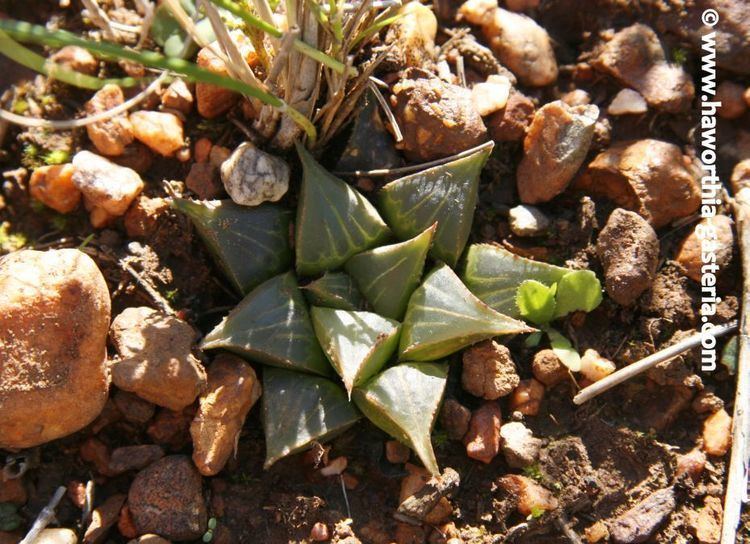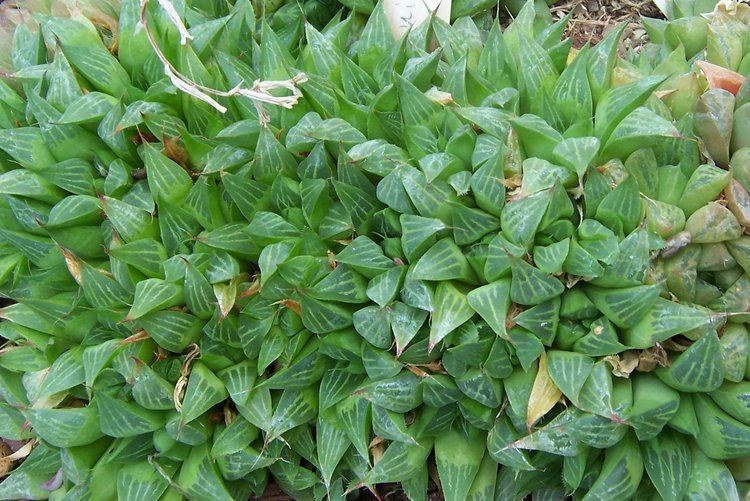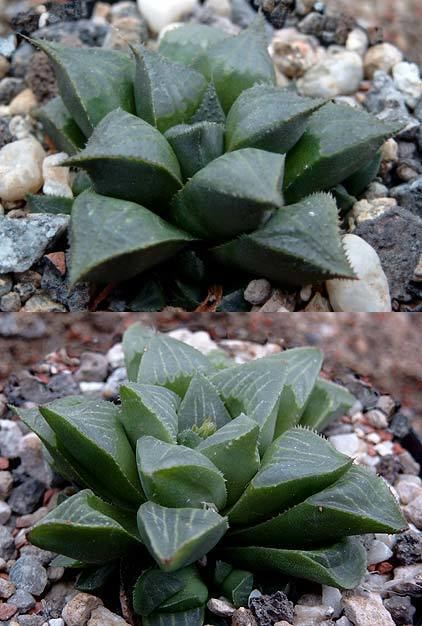Clade Monocots Rank Species | Clade Angiosperms | |
Similar | ||
Haworthia mirabilis is a species of the genus Haworthia belonging to the family Asphodelaceae.
Contents
Etymology

The genus name Haworthia honors the British botanist Adrian Hardy Haworth (1767–1833), while the species epitheton mirabilis derives from Latin and means "wonderful”.
Description

Haworthia mirabilias is a succulent evergreen slow-growing species reaching a size of 4 to 45 centimetres (1.6 to 17.7 in) in height. It is usually a solitary stemless plant. The leaves are green, with longitudinal pale green lines along the upper surfaces and small teeth along the margins. They turn to brownish or reddish in the sun. The leaves form a rosette and the flowers are white and small, in an inflorescence.

This highly variable species is one of the "retuse" species of Haworthia, meaning that it usually grows sunken beneath the ground with its flattened leaves only showing on the surface. Its rosette of succulent leaves are turned back ("retuse") so as to provide a flat and level face on the surface of the ground. In this form, it is similar to other retuse haworthias (e.g. Haworthia pygmaea, Haworthia bayeri, Haworthia springbokvlakensis, Haworthia magnifica, Haworthia emelyae and Haworthia retusa).

However Haworthia mirabilias can be distinguished from its relatives by the marginal bristles on the leaves, and the way that the leaves end in sharp points. They also usually have lines on the upper leaf faces.
Varieties

Further subdivisions
Distribution
This species is native to the Western Cape, South Africa. Specifically it occurs in the Overberg District, near the far southern point of the country.
Habitat
It grows in rocky areas, especially slopes or ridges, at an altitude of about 500 meters. In habitat it is often found growing in the partial shelter of bushes or shrubs.
